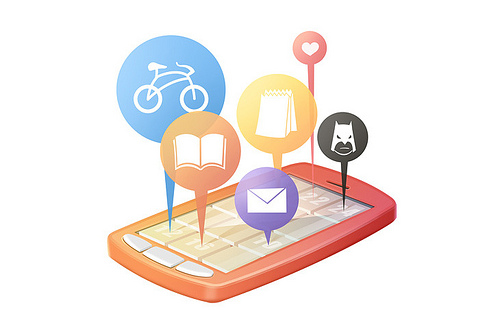2012 21
The Auditive Internet: a Rising Trend
Published by MartinVarsavsky.net in Internet & Technology with
 Recently there has been an increased focus on our barriers to multitasking. For example, imagine yourself driving as you receive a twitter update or an SMS on your cell phone. Without a driverless car, your eyes must be focused on the road with your hands on the steering wheel, not on your phone. And that’s just one case; the desire for visual and tactile independence is true for any situation where your attention is required elsewhere. In this sense, I am starting to see more and more options for programs to read information aloud.
Recently there has been an increased focus on our barriers to multitasking. For example, imagine yourself driving as you receive a twitter update or an SMS on your cell phone. Without a driverless car, your eyes must be focused on the road with your hands on the steering wheel, not on your phone. And that’s just one case; the desire for visual and tactile independence is true for any situation where your attention is required elsewhere. In this sense, I am starting to see more and more options for programs to read information aloud.
The improvement in speech recognition and text-to-speech programs has transformed our interactions with smartphones. For example, the Samsung Galaxy SIII comes equipped with “Driving mode”: a service that announces incoming calls, reads inbound text messages and emails, and allows you to reply back orally. Furthermore, look at personal assistant services like Siri and Sherpa. These apps provide a way to essentially maintain an oral conversation with your mobile device, accessing data from the phone’s systems, apps and internet sites. I find these programs valuable; I rely on my mobile phone primarily as a source of news and updates from my social networks.
For this reason, some months ago I created an Android app called RadioMe. In September it was improved and renamed SpotRadio. It’s a radio that reads your social media feeds, so that you can receive your Twitter, Facebook, Gmail, LinkedIn updates by spoken word. I personally find it most useful on my bike trips, which are often long and well accompanied by a mix of music and personal news.
What’s more, in the market for social DJ apps I have a great competitor: The Social Radio. Its creator Roberto Gluck and I recently discussed the similarities and differences between our apps with the hope of improvement on both ends.
The Social Radio has many advantages – its default TTS program provides a more realistic, less robotic voice that changes between male and female. It recognizes two more languages than SpotRadio, one of which is Russian. The app has Android, iOS and web versions, while SpotRadio currently only supports Android. Its interface is simple like SpotRadio’s, and although it has less options for configuring frequency and duration of music and social news, it offers more choices for receiving Twitter news: you can listen to customized lists or trending topics as opposed to the full stream.
However, The Social Radio doesn’t read other social media networks- it’s only available for Twitter, whereas SpotRadio can integrate Facebook, LinkedIn, Gmail and SMS. At the same time, the app consumes much more bandwidth than SpotRadio because the voices are synthesized on an external server, rather than on the device itself. Additionally, while SpotRadio keeps social media account information within the app, The Social Radio requires authorizing access to Twitter account every time the app is opened. SpotRadio provides your social news in written form, recognizes duplicate updates and won’t read the provider of the update if you prefer not to hear it- options unavailable in The Social Radio.
The Social Radio and SpotRadio are two new tools of many that offer the ability to receive spoken notifications from your handheld device. Whether accessing your Facebook updates or reading you an email, this auditory trend is convenient and increasingly relevant to multitaskers. In any case, it should take off even further as improvement in TTS and voice recognition technology continues.
Follow Martin Varsavsky on Twitter: twitter.com/martinvars
Español / English
Tags
Recent Tweets
Categories
- Arab revolts
- Argentina
- Catalonia
- Economy
- Education
- Entrepreneurship
- Europe
- Fon
- Found on the net
- General
- Gramofon
- International
- Internet & Technology
- Investments
- Micro
- Middle East
- Movies
- MV
- New Ideas
- Open Source
- Other Projects
- Paternity
- PeekFON
- Philanthropy
- Prelude
- Religion
- Spain
- Technology
- Terrorism
- Trips
- USA
- Web 2.0




